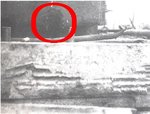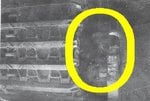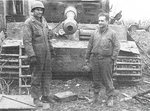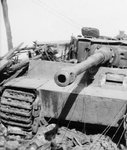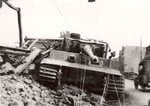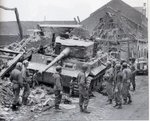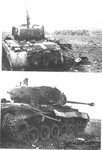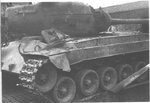Navigation
Install the app
How to install the app on iOS
Follow along with the video below to see how to install our site as a web app on your home screen.
Note: This feature may not be available in some browsers.
More options
You are using an out of date browser. It may not display this or other websites correctly.
You should upgrade or use an alternative browser.
You should upgrade or use an alternative browser.
Best/Favourate Tank in the west (1 Viewer)
- Thread starter Yeomanz
- Start date
Ad: This forum contains affiliate links to products on Amazon and eBay. More information in Terms and rules
More options
Who Replied?posted in 2005
The optics on the Pz. Kwpf IV Ausf F/2 were not amazing. I fail to see where you get that idea. TZF5f had a maximum range of 3,300 metres with high explosive (HE) ammo, reduce that to 2,500 metres in tank combat for the armour piercing round.... []
[]... The only reason the Pz. Kpfw IV F/2 was in such a good battle ground in the desert was because the British tanks facing it were so obviously inferior. The best facing it were 40mm armed Matildas and Crusaders.
Also, the KwK40 L/43 was more accurate than the M3 75mm. The German cannons were so good because of their high velocity and accuracy.
Hi,
I know that this is a pretty old post from 2005, but I'd still like to throw in my 2 cents, as the original poster obviously doesn't know what he's talking about...., so here goes:
The optics used in the Panzer IV were in fact superior. Interesting enough, the Russians copied the TZF 5f (as far as I know they got the manufacturing tools directly from Zeiss, in the 1930s) and employed the copy in their T-34 later on.
Let me quote a vital part with a veteran account collected by G. Green (from Green's book "Panzers at War", page 60):
Quote from "Panzers at War", by G. Green, page 60
"German optical sights were far superior to anything the Western Allies or the Red Army mounted on their tanks during World War II.
Tom Sator, an M4 Sherman medium tank crewman who served in the U.S. Army's 4th Armored Division in Western Europe from late 1944 through the end of the war, remembers his first chance to look through the gunner's sight on a Pz.Kpfw.IV with the long 75mm gun tube:
There was always a lot of talk about the effectiveness of the German tank guns against us. It is true that they had to stop to fire, but they started firing from 1,200 to 1,500 yards (1,096 to 1,371 meters). Their first shot was always a hit. We, on the other hand, had to get within 500 to 600 yards (457 to 548 meters) to be within effective firing distance, and even our best gunners needed at least two shots before they could score a hit.
Our CO (commanding officer), Captain Jimmy Leach, sent the platoon sergeant down to my tank during one of the lulls between German artillery barrages, and he hollered up, 'Hey Sator, you speak German?' 'Yeah, why?' I answered. 'The radio in that abandoned German tank (Pz.Kpfw.IV) back there is alive. Captain wants you to listen and see what they are talking about'. So, I went with him. Sure enough, when we got there, you could hear the radio squawking. I climbed in and put the gunner's earphones on. It was difficult to hear, and because the guy was talking in a strange dialect, I could understand only a few words here and there. Then I saw the gun-sight and I figured I might as well look through it while I was there, and as soon as I did, almost immediately, the realization came to me why the German tank gunners were so accurate. 'Shyte, I wanna go home' is the only thing I could think of at the moment. Their sights were so far superior to ours that we didn't stand a chance."
Another quote, from "M4 (76mm) Sherman Medium Tank 1943 - 65" by Steven J. Zaloga, page 6, discussing the shortcomings of the earlier versions of the M4 (with the 75mm gun), particularly the periscopic gun sights in the early versions (M39A2 i guess):
"The fighting in North Africa revealed the inadequacy of periscopic sights for gun aiming, and both US and British officers recommended following the German example and shifting to a high-power telescopic sight. As a result, the M1 gun was mounted on the modified M34A1 combination gun mount with a new telescopic sight. Trials revealed that the internal counterweight that the internal counterweight was not adequate to balance the turret. Rather than simply graft another counterweight to the rear of the existing turret, Pressed Steel Car Company was authorized to manufacture 12 M4A1 (76M1) tanks with a modified cast turret with an integral counterweight. The first of these was delivered in February 1943 to the Armored Board at Fort Knox. The trials concluded that internal turret space in the tank was unsatisfactory, and the design was criticized as an improvised "quick fix" not suitable for troop use."
That means that the 75mm Shermans deployed to the African theater did not have telescopic sights, and the badly equipped tank destroyers (with their open turrets) probably didn't have these either.
The 76mm Shermans with telescopic sights then weren't put into mass production before mid 1943 (maybe even later, at the end of the same year, I would have to look it up), and, due to various disputes among officers in the Armoured Board and the Ordnance office, they weren't even directly sent to the Italian theater, although US tankers in Italy desperately demanded the deployment of the 76mm Shermans, as they had to face Panthers for the very first time (some time after the landings at Anzio, Italy), along with upgraded Panzer IVs, with both being enemy assets that proved the 75mm Shermans to be less effective, or even absolutely ineffective when firing at a Panthers sloped front glacis or gun mantlet (see sources covering the US trial in 1944, where 76 mm guns (M10?) fired at a captured Panther tank, unable to penetrate the Panther's glacis at all, the projectiles just bounced or just inflicted minor damge (dents
These disputes (mostly about ammo supply, as the 76mm version needed different ammunition, and it was less effective as infantry support tank, due to different size of HE chambers, and due to the fact that their crews had ZERO experience) led to a situation where 76mm Shermans weren't even scheduled for the Normandy operation in 1944, although they were available in numbers - with them just sitting in the UK, at least until operation Cobra.
Regarding the British tanks being "inferior":
Well, their guns were inferior, but not their armor. The Matilda II tank was basically invulnerable to the Panzer III's 50mm gun at medium and long range (if it didn't fire the rare AP rounds with tungsten cores) - the Panzer III was the work horse of the Germans in Africa all through the desert campaign, but, in turn, the Matilda's 40-mm gun did not have the penetration power to destroy German tanks at medium or long range. The Valentine and Crusader were faster / more mobile, but still lacked penetration power as they all employed the 40-mm gun. The distribution of Panzer IVs and the removal of the Panzer II from frontline service changed things tremendously, as it totally negated the initial British superiority in armor protection (compared to Italian tanks and German Panzer I-III).
But the real tank killer (in defensive actions, and until the Tiger I appeared in North Africa) was the 88mm Flak, as it featured Zeiss optics that were even better (and bigger) than the relatively small ones in the Pz. IV F2, where the gun's accuracy and range enabled Flak crews to kill Allied tanks at ranges of up to 1,800 meters.
That said, German sights were superior, at this stage of the war for sure, at least.
Last edited:
The German optical sights were far superior to anyone elses throughout the war, but they were also time consuming and expensive to make.
The tank gun telescopic sights used were either of binocular or monocular type, and they featured two selectable magnification settings of 2.5x or 5x. The lower magnification provided a wider field of view for target identification. The higher magnification assisted in precise aiming at long ranges. Two adjustable range scales allowed the gunner to register the exact range to the target for what'ever type ammunition used.
The tank gun telescopic sights used were either of binocular or monocular type, and they featured two selectable magnification settings of 2.5x or 5x. The lower magnification provided a wider field of view for target identification. The higher magnification assisted in precise aiming at long ranges. Two adjustable range scales allowed the gunner to register the exact range to the target for what'ever type ammunition used.
The tank gun telescopic sights used were either of binocular or monocular type, and they featured two selectable magnification settings of 2.5x or 5x.
While this may be true regarding later TZF devices employed in the Panther and Königstiger tanks, the TZF 5b employed in the Pz IV Ausführung B-F featured 2.5x magnification and the TZF 5f employed in those Pz IVs that had been upgraded with the long barreled 75mm gun (Pz IV Ausführung F2) featured 2.5x magnification only, as well.
German military optics
That is true GeeGee, but you forgot to mention the Tiger Ausf.E
Nah, that's why I mentioned Panthers and Tigers...
I should add that the TZF 5f had been employed in Pz IV Ausf. G as well, so 5x magnification wasn't available in the African theater, at least not in Pz IV models.
In turn, the M39A2 employed in 75mm Shermans featured 1.8x (!!!) magnification only, and the periscopic sight had a lower quality than comparable Zeiss optics used by the Germans, so this added to the Allied disadvantage.
The 76mm Shermans finally received 5x gun sights (M71D), which provided a FOV of 13 degrees only
So you can tell that German optics were up front regarding performance and quality, mostly.
http://www.simcentrum.com/uploads/USTank-optics.pdf
renrich
Chief Master Sergeant
Whichever one of those which was the Panther. I believe that once the bugs were ironed out the Panther was the best tank to see major action in the war. If it had seen much action it would be interesting to compare the Panther and the Pershing.
The Pershing sadly wasn't a very good tank. Unlike most other US tank designs the Pershing was very unreliable, even more so than the German Tiger Ausf.B, which is saying a lot really. The protection was good, and so was the armament, but compared to the German tanks already in service it just wasn't enough, the 75mm KwK42 on the Panther being capable of punching straight through the gun mantlet like a hot knife through butter even at 2,000 + meters.
Soren
Quote: "the 75mm KwK42 on the Panther being capable of punching straight through the gun mantlet like a hot knife through butter even at 2,000 + meters. "
Wasn't the gun mantlet of M26 14% thicker than that of Panther? So that worked to both directions.
And maybe even more to other direction, 7,5cm KwK 42 and US 90mm having almost same penetration power at 1000y 121mm vs 120mm homogenous armour at 30deg, KwK being better under 1000y distances, 90mm being better over 1000y distances.
Juha
Quote: "the 75mm KwK42 on the Panther being capable of punching straight through the gun mantlet like a hot knife through butter even at 2,000 + meters. "
Wasn't the gun mantlet of M26 14% thicker than that of Panther? So that worked to both directions.
And maybe even more to other direction, 7,5cm KwK 42 and US 90mm having almost same penetration power at 1000y 121mm vs 120mm homogenous armour at 30deg, KwK being better under 1000y distances, 90mm being better over 1000y distances.
Juha
Last edited:
renrich
Chief Master Sergeant
From reading in Wiki, it seems that the Pershing was pretty effective against other tanks including the Tiger but had teething problems early on, just like Tiger and Panther. The AD I was in in early 60s was equipped with offspring of the Pershing and the M41.
Renrich,
The teething problems that the Pershing suffered were worse than those of the Tiger Ausf.B and much worse than those of the Tiger Ausf.E, and this is while adding no significant improvement in protection over say a Jumbo and no improvement in firepower compared to the already available TD's. So the Tiger Pershing can't really be compared.
Furthermore the Pershing hardly saw any combat, and when it did it was in close range engagements where it was very carefully used, which was the main reason it usually did well in the engagements it paticipated in. It wasn't used in any spearhead action, the Sherman was still dedicated to that role even when the Pershing was available, and mainly because it really wouldn't have made any difference except for losing a Pershing instead of a Sherman, and since the Pershing was the more expensive the choice was simple.
A good example of this is a famous filmed action with a Pershing equipped regiment in Germany. A Sherman EasyEight was selected to spearhead an attack inside a city while the assisting Pershing was carefully used in the same manner as the very lightly armoured TD's. What ended up happening was that the Sherman EE ran into a Panther and got blown up, the driver radio operator getting killed emmidiately with the first shot and the rest of the crew escaping badly burned. The Pershing then carefully began stalking the Panther, catching it by surprise from the right flank and putting two AP rounds into its' thinly armoured side, killing the driver and radio operator (Seems like the worst spot for any tanker by now ).
).
Good tactics won the day.
3 Pershings got knocked out before the war ended, two by Tiger I's and one by a Nashorn TD. The first was by a Tiger which fired an AP shell through a building which then continued through the side of the Pershing's turret.
The teething problems that the Pershing suffered were worse than those of the Tiger Ausf.B and much worse than those of the Tiger Ausf.E, and this is while adding no significant improvement in protection over say a Jumbo and no improvement in firepower compared to the already available TD's. So the Tiger Pershing can't really be compared.
Furthermore the Pershing hardly saw any combat, and when it did it was in close range engagements where it was very carefully used, which was the main reason it usually did well in the engagements it paticipated in. It wasn't used in any spearhead action, the Sherman was still dedicated to that role even when the Pershing was available, and mainly because it really wouldn't have made any difference except for losing a Pershing instead of a Sherman, and since the Pershing was the more expensive the choice was simple.
A good example of this is a famous filmed action with a Pershing equipped regiment in Germany. A Sherman EasyEight was selected to spearhead an attack inside a city while the assisting Pershing was carefully used in the same manner as the very lightly armoured TD's. What ended up happening was that the Sherman EE ran into a Panther and got blown up, the driver radio operator getting killed emmidiately with the first shot and the rest of the crew escaping badly burned. The Pershing then carefully began stalking the Panther, catching it by surprise from the right flank and putting two AP rounds into its' thinly armoured side, killing the driver and radio operator (Seems like the worst spot for any tanker by now
Good tactics won the day.
3 Pershings got knocked out before the war ended, two by Tiger I's and one by a Nashorn TD. The first was by a Tiger which fired an AP shell through a building which then continued through the side of the Pershing's turret.
Last edited:
Renrich,
The teething problems that the Pershing suffered were worse than those of the Tiger Ausf.B and much worse than those of the Tiger Ausf.E, and this is while adding no significant improvement in protection over say a Jumbo and no improvement in firepower compared to the already available TD's. So the Tiger Pershing can't really be compared.
Furthermore the Pershing hardly saw any combat, and when it did it was in close range engagements where it was very carefully used, which was the main reason it usually did well in the engagements it paticipated in. It wasn't used in any spearhead action, the Sherman was still dedicated to that role even when the Pershing was available, and mainly because it really wouldn't have made any difference except for losing a Pershing instead of a Sherman, and since the Pershing was the more expensive the choice was simple.
A good example of this is a famous filmed action with a Pershing equipped regiment in Germany. A Sherman EasyEight was selected to spearhead an attack inside a city while the assisting Pershing was carefully used in the same manner as the very lightly armoured TD's. What ended up happening was that the Sherman EE ran into a Panther and got blown up, the driver radio operator getting killed emmidiately with the first shot and the rest of the crew escaping badly burned. The Pershing then carefully began stalking the Panther, catching it by surprise from the right flank and putting two AP rounds into its' thinly armoured side, killing the driver and radio operator (Seems like the worst spot for any tanker by now).
Good tactics won the day.
3 Pershings got knocked out before the war ended, two by Tiger I's and one by a Nashorn TD. The first was by a Tiger which fired an AP shell through a building which then continued through the side of the Pershing's turret.
The information on the Pershing casualties can be found on pages 9-32 of Hunnicutt's book 'A History Of The Medium Tank T20 Series'.
The 3 casualties were
'Fireball' number 38. Knocked out at Elsdorf by a Tiger on 25/2/45. Hit 3 times one of which penetrated through the co-ax MG port. Another bounced off the turret and a third hit the muzzle brake. The tank was repaired and was back in action by 7/3/45.
Number 22. Hit by 2 large calibre (Field Artillery?)high explosive rounds 1/3/45. The crew were inspecting the damage caused by the first hit when the second struck, killing one man. The tank was repaired and returned to service.
Number 25. Hit by a Nashorn at 300 yds. penetrated through the lower hull front. All crew escaped unharmed. Tank written off as unrepairable
The following is a Tiger that was attacked FRONTALLY by a Pershing. The Tiger was pentrated and knocked out.
Attachments
This is the Tiger that knocked out Fireball. It got stuck in the rubble and the crew fled
Attachments
First 2 pics are no.22. Destroyed by Artillery hit 1/3/45.
Next is no.38, Fireball ko'd 28/2/45 by a Tiger.
Lastly no.25, hit by the Nashorn 1/3/45. All photos from Hunnicutt
Next is no.38, Fireball ko'd 28/2/45 by a Tiger.
Lastly no.25, hit by the Nashorn 1/3/45. All photos from Hunnicutt
Attachments
Wow! Did the Pershing REALLY penetrate the Tiger Ausf.E's FRONTAL armour at 200 yards or less ?? Damn! That's like 110 mm of vertical armour!
One of the hits was through the manlet.
There are those who like to say things like:
'The Pershing then carefully began stalking the Panther, catching it by surprise from the right flank and putting two AP rounds into its' thinly armoured side'
so I thought I would give an example where a Pershing attacked from the front. No way to insuinuate it was stalking or suprisimg it's victim here!
I never mentioned the range and your source for the 200yds or less does not agree with the account in Hunnicutt. There you find the range was 900yds. The T26 (Pershing)No. 40 hit the Tiger twice with AP (T30E16 Projectile) and twice with HE. It then engaged 2 PzIV's at 1200 yds and despatched both with one hit each.
Haha, you're the most easily agitated man on this forum! Say one thing that can in extreme cases be taken like some sort of negative insinuation about an Allied tank and you go nuts. lol
Well m_kenny I'm sorry but the camera man himself mentions that the Pershing was stalking the Panther and caught it offguard from its' right flank. That having been said it was a close call as the Panther's turret had begun to swivel in the Pershing's direction just before the first shot.
Well m_kenny I'm sorry but the camera man himself mentions that the Pershing was stalking the Panther and caught it offguard from its' right flank. That having been said it was a close call as the Panther's turret had begun to swivel in the Pershing's direction just before the first shot.
Last edited:
Users who are viewing this thread
Total: 2 (members: 0, guests: 2)
Similar threads
- Replies
- 6
- Views
- 1K


